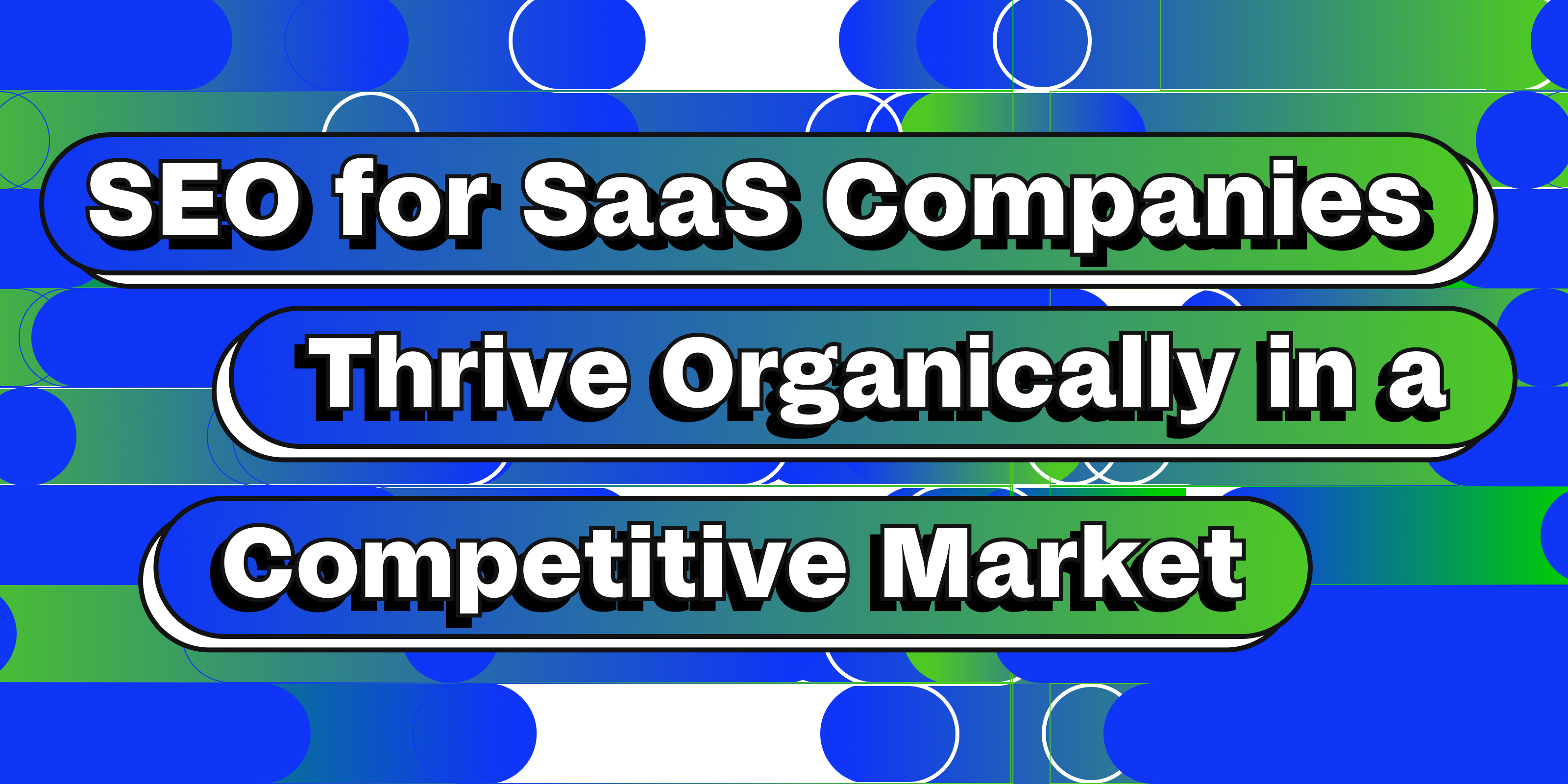Web3 has changed the way we approach many aspects of the web experience from access to ownership — naturally, it has also radically changed how many in the space are approaching marketing. While digital products have been ubiquitous for some time, the decentralized nature and blockchain dependency that Web3 products carry with them add new challenges and new opportunities for the way in which they are marketed.
While true that traditional advertising tools and platforms remain relevant for many of these projects, and getting served ads on Meta’s platforms from blockchain companies are becoming more and more commonplace, there’s additional nuance to the space that allows projects to go beyond traditional ad channels in order to build brands, win advocates, and churn growth loops.
Of the new methods, and new brands, that have been making big changes to the way in which projects achieve growth, the most noteworthy projects we’ve witnessed emerging in new ways are:
- Brave Browser: Creator Ecosystem
- Brave Browser: Rewarding Ads
- Chainalyisis: Education + Advancement
- Braintrust: Equity, Transparency, + Ownership
- Circle: Community
- Candy: Modernization
Brave Browser: Creator Ecosystem
Strategic Theory:
Leverage the creator economy by integrating it directly into the browser experience.
The creator economy has been at the foundation of the Brave Browser’s growth since 2018, and while the browser boasts that it’s 3x faster than Chrome and provides better protection for its users, these were supplemental perks to their value proposition.
The growth mechanism for the Brave Browser was initially built as a two-pronged program with the first step of the process being rooted in social validation. Advocates for the browser were rewarded in the same way that traditional referral programs worked, except that the rewards were paid out in BAT – Brave’s proprietary token.
Rather than traditional rewards systems, which tend to offer discounts or credit to users, Brave was able to offer equity to users to generate liquidity within the BAT ecosystem. For each user that was referred, the advocate user would gain more BAT, and in turn, increase the value of the BAT itself by adding new users and creating more commerce within the ecosystem.
This brings us to the second prong – the ecosystem.
Brave sees the creator economy as just that, an economy. And in doing so they have built their browser in a way to allow for the instant tipping and rewarding of creators on the network.
Unlike other approaches to content and digital assets in the Blockchain community, Brave took a more decentralized approach to the funding of creators by implementing a tipping system to the browser.
Users could link their wallets to their browsers, find creators, and immediately tip them with their BAT token.
Pairing the referral program and the tipping program made the Brave approach very sticky – an obstacle many new projects in the space struggle with.
Rather than having a referral program to encourage advocacy with no incentive for continued use, by offering equity by way of BAT payouts and encouraging tipping for creators there became a cyclical economy that developed as an extension of their growth strategy.
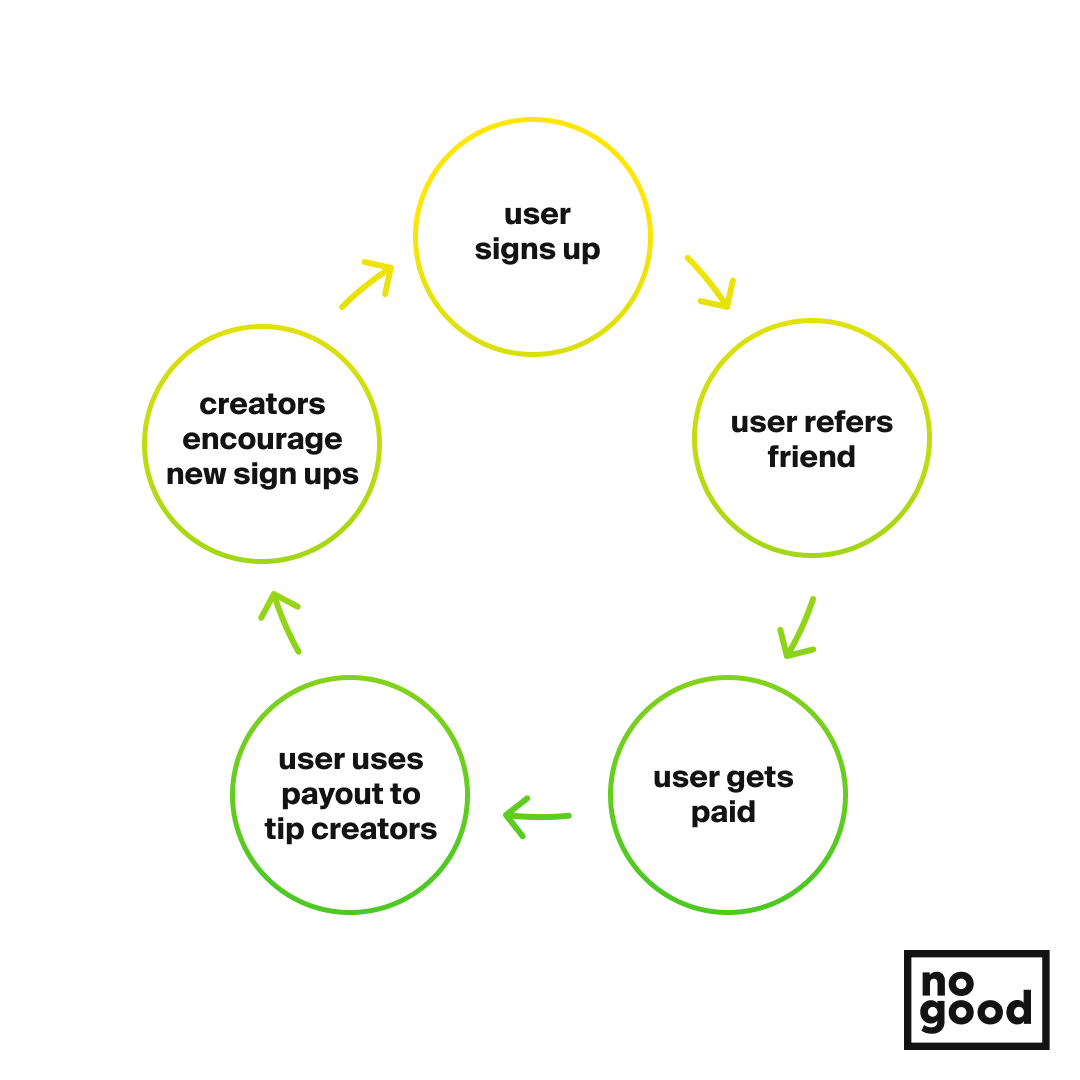
In addition to the new users and the commerce being generated as a result, users and Brave are both well positioned to potentially generate wealth as sign-ups add liquidity and add value to BAT as a currency itself which helps drive further advocacy and growth – a unique opportunity within the web3 ecosystem.
Brave Browser: Rewarding Ads
Strategic Theory:
Create a new ad platform that rewards users for viewing ads to encourage both brand and user.
Beyond the creator economy, Brave also built a solution for users and brands who either struggled with traditional browsers and the inundation of ads or were running ads and struggling with users wanting to watch them.
In a similar play for building equity and advocacy, Brave built a reward system into their browser to encourage users to allow ads by paying them for viewing them.
This not only creates a better ad experience for users as they are now being compensated for their ad views, a far departure from traditional advertising platforms, but also a better experience for advertisers as they know their ad spend is going to directly benefit users who are actively engaging in their ads.
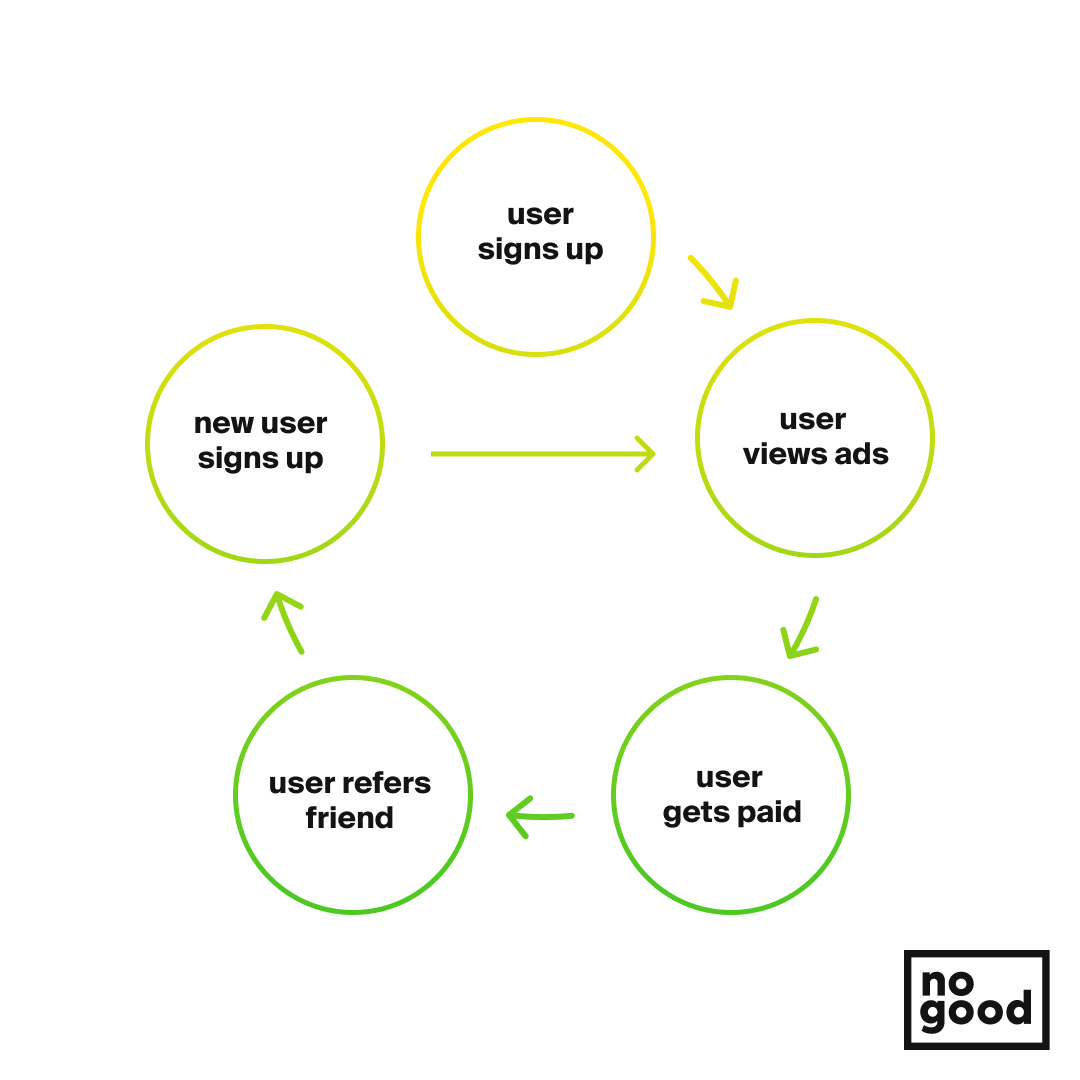
Once again, Brave’s approach to community building is rooted directly in building equity for their users, both on the advertising side and the user side, to encourage advocacy through directly rewarding usage. This creates a positive feedback loop that continues growth with each referral round as users continue to build their stockpile of BAT and churn it back into the economy.
Chainalysis: Education + Advancement
Strategic Theory:
Generate advocates through education to increase the potential workforce.
While Coinbase set the standard for education as a means of adoption for crypto and web3, Chainalysis is approaching growth with a bit of a different perspective by educating the community in order to equip them with the needed tools to break into the blockchain business.
The burgeoning blockchain industry, while rapidly growing, is facing something of a staffing crisis with many companies needing experienced workers to support their growth. As with many other industries, however, most opportunities require experience in order to gain experience, leaving many would-be candidates frustrated and at a loss for opportunities to break into the field.
Chainalysis’ answer to this is a number of certification programs that they’ve made available in order to bypass these frustrations.
“Learn how investigators, compliance officers, analysts, regulators, and more can become Certified in Cryptocurrency Fundamentals, Chainalysis Reactor, and Chainalysis KYT (Know Your Transaction)”
While Coinbase was harnessing education in a slightly different way in that they rewarded users with crypto for learning about blockchain to create informed consumers who then became advocates for the brand, Chainanlysis’ approach takes an industry focus to create advocates who will help in populating a new sector of regulation for the industry.
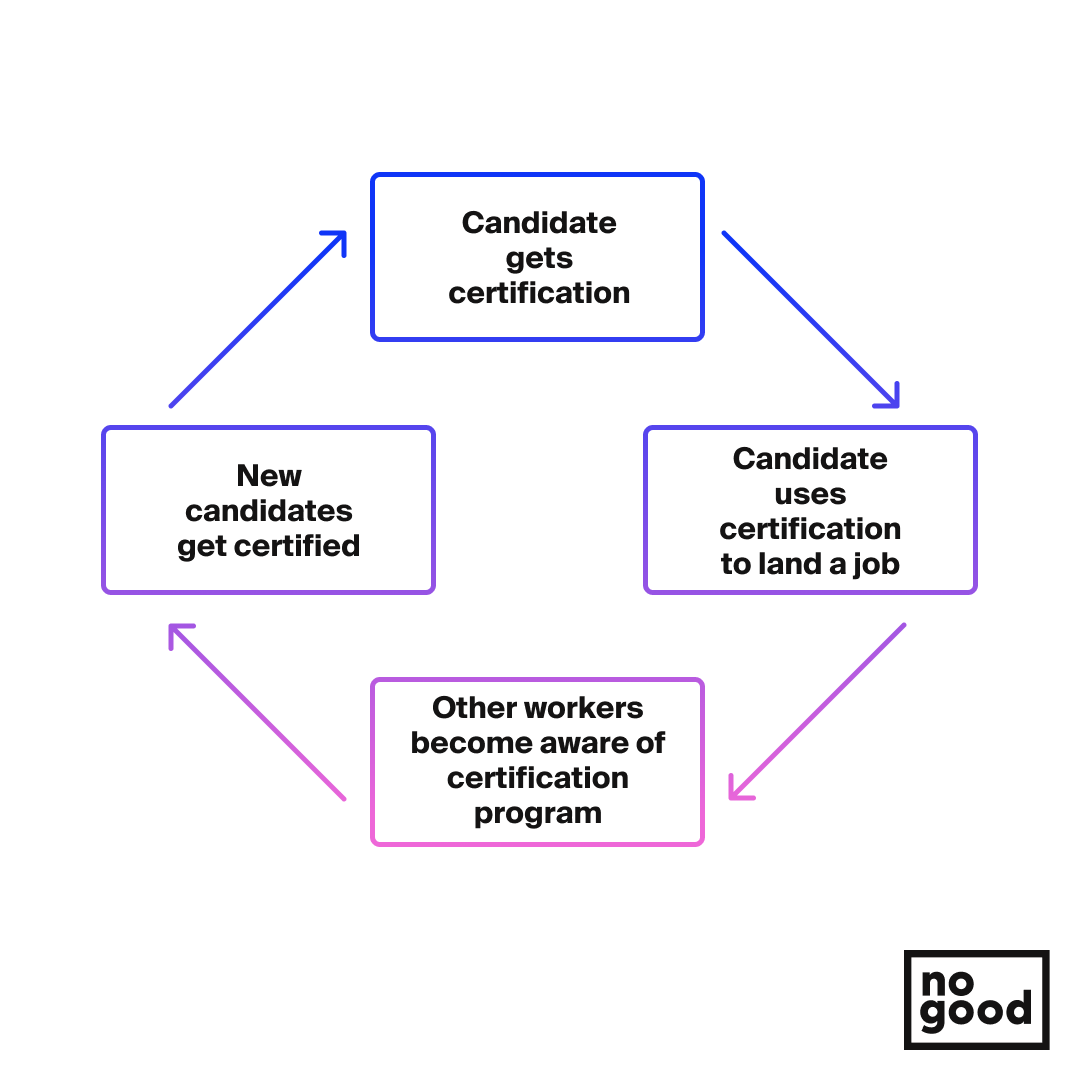
Taking the B2B growth strategy a step further, by equipping the workforce with the knowledge needed to land a job in the new compliance sector, Chainalysis is recognizing the future need for internal hires and generating a workforce that will see their product as the industry standard to drive growth back to the business when external businesses hire those with their certifications.
If we were to go a step further and follow this growth path, the new hire would make the recommendation that all team members receive the same certifications that they’ve received, expanding the breadth of advocates being generated from the program.
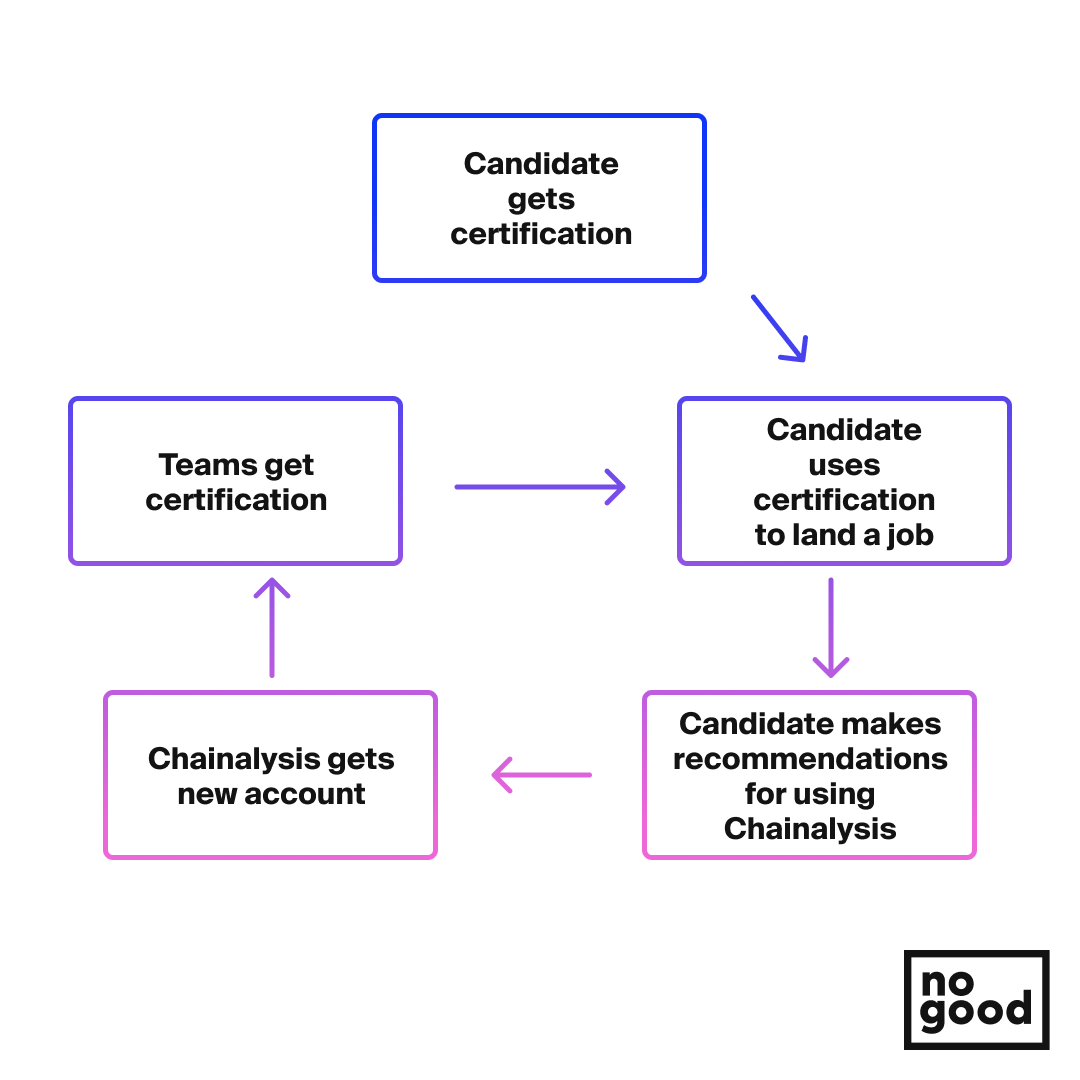
Braintrust: Equity + Ownership:
Strategic Theory:
Build equity into the recruiting process to build community and wealth.
Recruiting is an industry that is universally used, but often misunderstood and Braintrust is looking to change that through the application of blockchain. Similar to the approach that Brave is taking with the implementation of BAT, Braintrust has minted BTRST token as a means of equity, transparency, + ownership of the platform.
The recruiting platform is, for all intents and purposes, functionally similar to a traditional recruiting firm, with a few key differences:
- They only accept the top 1% of the talent pool
- They don’t mark–up salaries or charge talent fees so candidates earn more
- They offer payment in BTRST token
While the first two reasons are incredibly beneficial for both candidates and brands looking to hire, it’s the third difference that is the star of their system.
As we discussed with Brave, getting paid in BTRST not only provides candidates equity and liquidity with their payments, but offering the potential to build wealth and treat their paycheck as an investment in themselves and Braintrust if they so choose to. But it also allows them to directly impact the future of Braintrust — providing candidates with a sense of ownership and agency in both their financial planning and career.
In addition to its monetary value, BTRST token also acts as a governance token — meaning it can be used to vote in the decision-making process for the business itself.
This is a powerful tool for Braintrust for their growth as impact encourages advocacy.
There are two loops in play here:

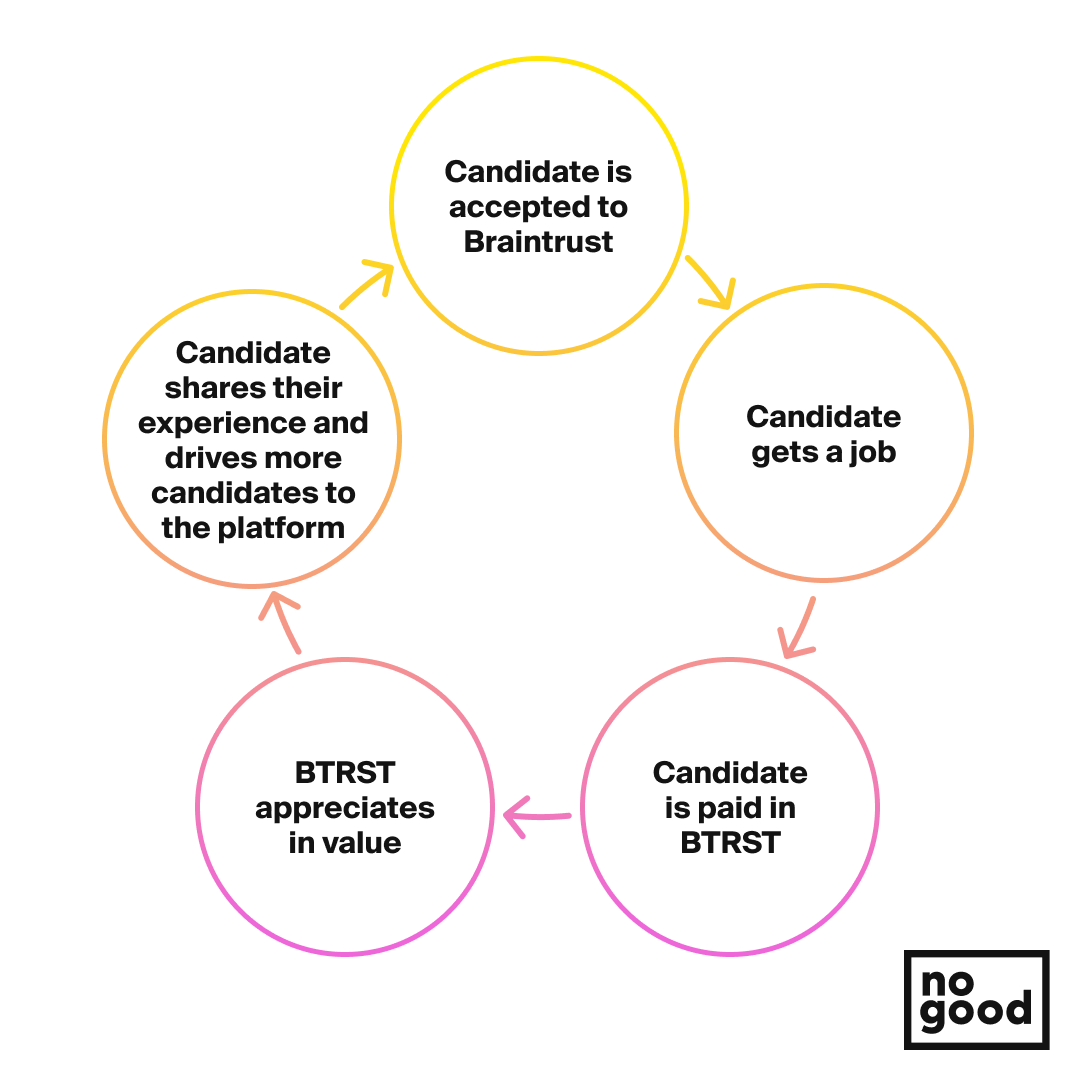
In both cases, the candidate is given a sense of ownership and agency in their participation in the platform — a far departure from traditional recruiting firms. By participating in the Braintrust system, they are not only partial owners of the company by holding BTRST, but also an active participant which encourages them to share their experiences to increase their own value and drive further participation.
Circle: Community
Strategic Theory:
Compound community growth by engaging existing communities to encourage advocacy + adoption.
Those decently familiar with crypto and blockchain will know the blockchain trilemma which states that “Of speed, security, and decentralization, you can choose two.” Circle is looking to change that — and they’re doing so through community.
While many brands and projects in blockchain remain incredibly siloed, Circle recognizes and understands that their business, as they rely on helping other businesses, depends on universal appeal, trust, and community.
Once again leveraging social validation for growth, Circle is building community both on and offline through content that incorporates individuals from all areas of business, finance, and blockchain.
On the digital front, Circle is pursuing what they’ve named, “The Money Movement” a series of videos that explores everything from NFTs, to digital advocacy, payment systems, and all things in between with guests joining them from places such as Goldman Sachs, Candy, Kraken, NowRX — representing the broad scope of reach that they are hoping to achieve through their growth.
On the human front, they mirror this approach with Converge, which they describe as, “a gathering for change makers…from crypto-natives to the crypto-curious, from traditional finance to Defi, from regulators and policymakers to non-profits, Converge22 is an unprecedented opportunity to dive deep, collaborate and establish a shared vision of the crypto economy.”
We see the same broad net being cast here in their approach to how they’re incorporating different voices into the conversation about the future of the crypto economy, ensuring that those who are skeptical are given just as much consideration and validation as those who are all-in on the blockchain movement.
From a growth perspective, this is an incredibly powerful strategy to build trust and authority, as it recognizes that for a mass adoption event to happen, all voices must be heard. It similarly ensures that the conversation, and by extension the product, is accessible to everyone — not just seasoned crypto folks.
This increases the opportunity for growth exponentially as it creates infinitely more opportunities and the likelihood that someone will share their content, and broaden their reach further.
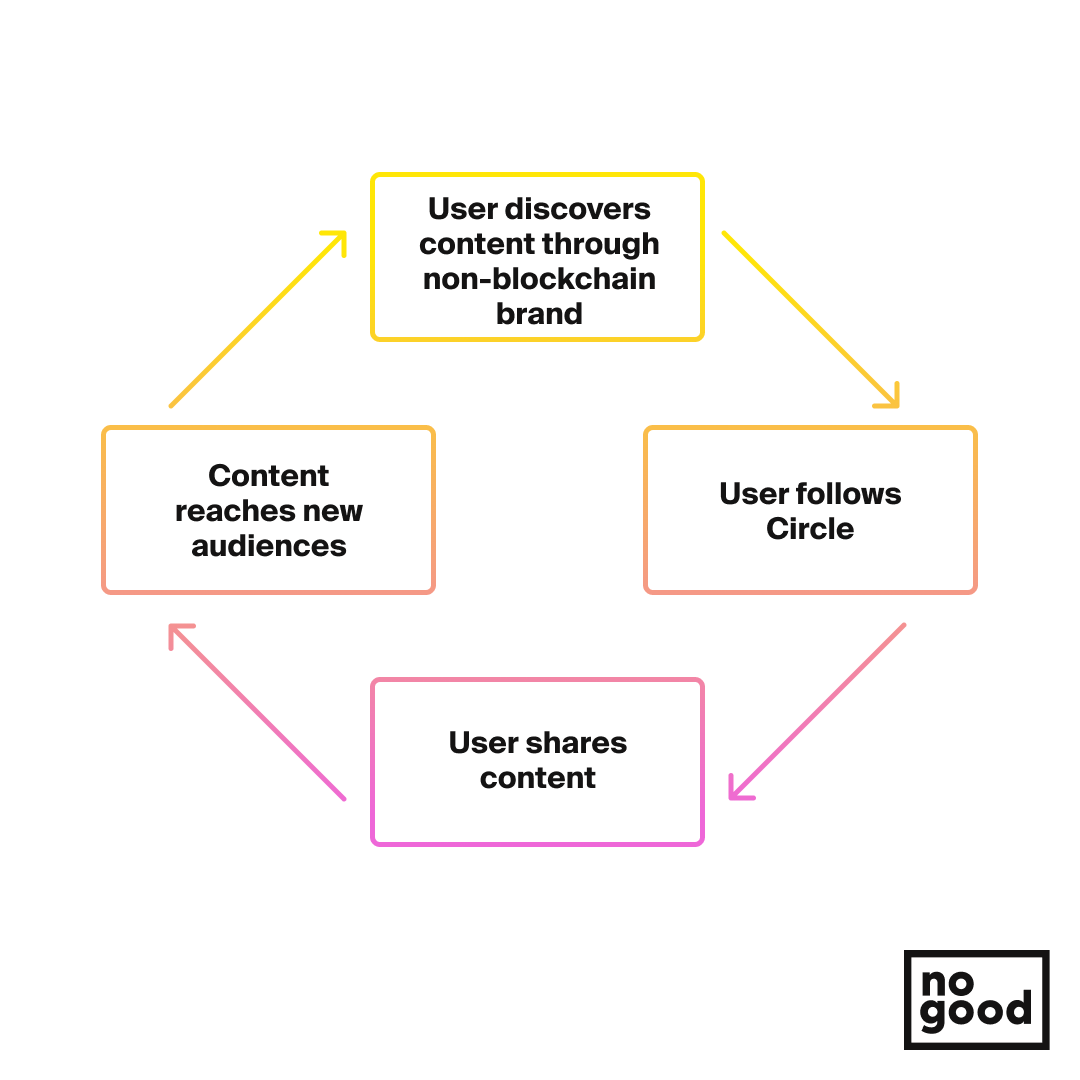
In the sea of hyper-optimistic content and singular voices, Circle is recognizing that for not only blockchain to succeed, but for themselves as well, new voices and new audiences must be considered — and they are giving everyone a seat at the table.
Candy: Modernization, Gamification, + Ownership
Strategic Theory:
Redefine digital ownership while gamifying the collectibles market to drive engagement.
When the world was first learning what NFTs were and how to explain them, one of the most common metaphors used was absolutely, “They’re like digital trading cards.” Candy took this idea and ran with it, taking it a few yards further than anyone could have anticipated, and driving growth through rampant fandom within sports, while also gamifying the experience to encourage loyalty.
While Candy hones in directly on the manufactured scarcity that made traditional sports cards popular and collectible, they leverage the digital aspect of their business to take things a step further and drive interactions which ultimately results in growth.
By implementing a set of challenges, where players are rewarded with points and other incentives for completing curated sets of “cards” Candy encourages users to trade with each other and otherwise interact in order to gain achievements. Through this process, advocacy is encouraged by collectors who would otherwise rely on other collectors to be able to trade with in order to complete challenges, as the scarcity aspect of the process reduces the likelihood of any individual user completing the challenges on their own.
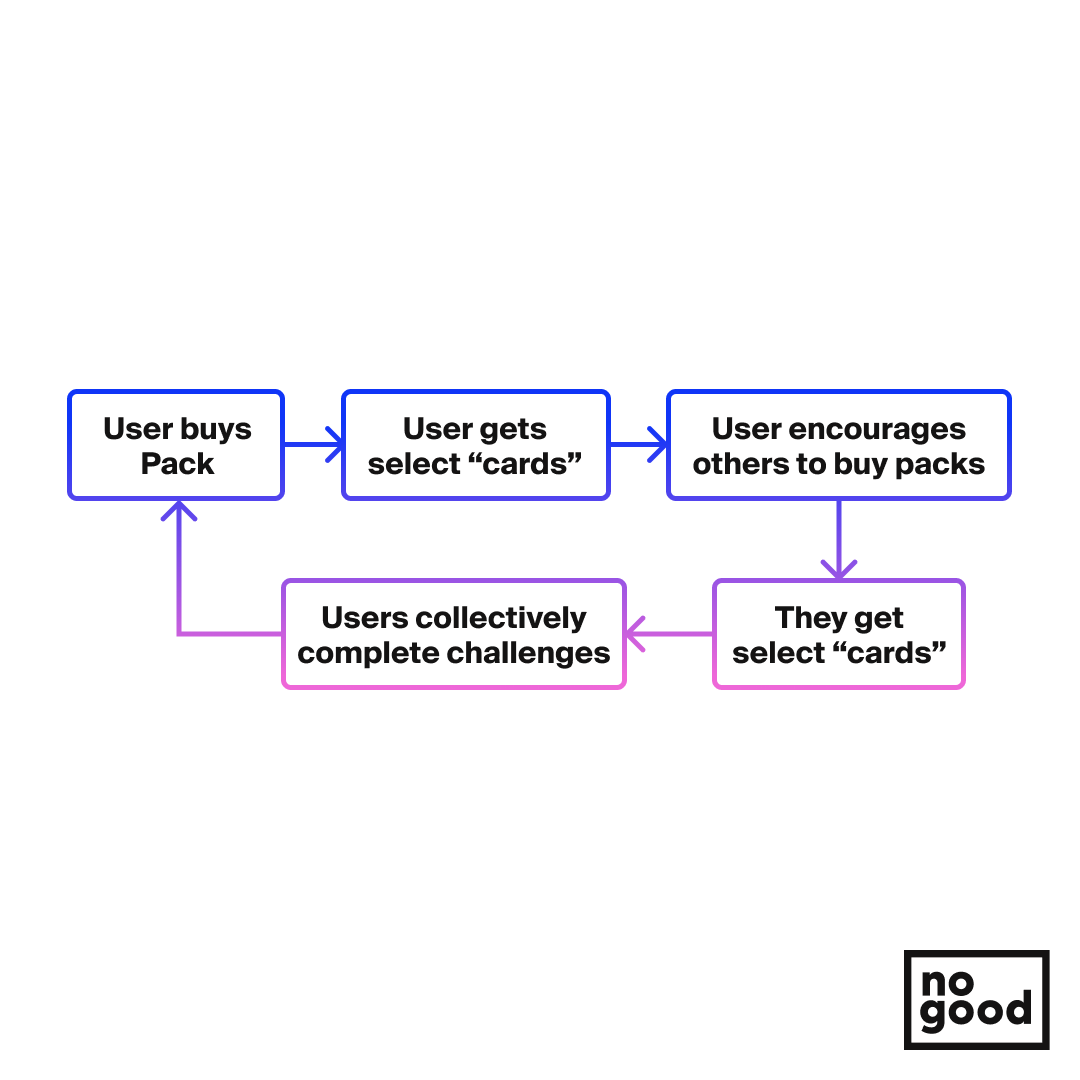
Candy takes this process a step further, adding a layer of digital ownership to the sports fandom experience by allowing users to own specific moments.
In recent history, Aaron Judge broke the AL single-season home run record — a moment that is significant to sports fans on a number of levels, and of course something to be commemorated.
And while there is only 1 ball that was hit for the 62nd home run, which of course is going to have substantial-worth due to its collectibility, Candy implements the same sense of ownership by minting the actual video of the homerun into an NFT to be collected — truly owning the moment.
By doing so, Candy positions itself in a way that will allow traditional collectors of sports memorabilia to bridge the gap between the old way of doing things and the blockchain equivalent by adding scarcity to historical moments and assigning them value and collectibility.
The Future of Growth
While many brands and services in the blockchain landscape are taking a page or two from the traditional strategies for growth that we’ve seen implemented time and time again, the unique nature of web3 allows for some innovative and groundbreaking opportunities to drive growth.
With many brands creating their own currencies, building reward systems to their networks, leveraging education to build community, and harnessing content and scarcity for growth, it’s an exciting time to build a brand with blockchain.
As new standards emerge, and new brands create new playbooks for building growth, we’ll be keeping an eye on new trends, and offering new insights.
If you’re building your own project and want to work with the best on the block, just say hi.


